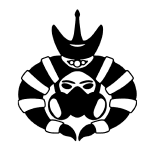Although Mongolia is the least densely populated country in the world, it’s the 4th most polluted country as of 2020. While most people would blame the fact that 45% of the population lives in the capital city Ulaanbaatar, air pollution in other rural cities has reached extremely unhealthy levels in the past few years. For example, thirty-two thousand residents in Bayankhongor city breathe polluted air for 284 days while they breathe normal air for only 84 days in a year on average.
There is not a single day during the cold season between October and March when residents can enjoy good air quality.
Let’s take a deep dive into the air pollution data of this city since 2019.

PM2.5 in the figure above refers to tiny microscopic airborne particles that have diameters of 2.5 microns or less, approximately 40 times smaller than a grain of sand. PM2.5 can easily penetrate into the bloodstream through the lungs and cause serious health effects including lung irritation, asthma, and heart diseases.
Poisoned even if you don’t smoke
The above graph shows that air pollution levels are mostly higher than the PM2.5 standard by the World Health Organization (WHO) throughout the year except during the summer. From 2020 to 2021, the average PM2.5 value increased by 21.8% from 43.6 micrograms per cubic meter to 53.1 micrograms per cubic meter. This value is 3.5 times higher than the WHO PM2.5 standard of 15 micrograms per cubic meter.
Breathing air with the highest daily average PM2.5 in Bayankhongor city, 237.8 micrograms per cubic meter, has the same health effect as smoking 11 cigarettes per day.

Breathing good quality air for only 2 months in a year
This shows that only July and August are when residents in Bayankhongor city get to breathe normal air. 72% of air pollution in Bayankhongor city comes from household coal-burning stoves whereas 15% comes from low-pressure boilers, and 12% comes from heat-only boilers. As of 2020, there are 18 heat-only boilers working in Bayankhongor city to provide heat for nearby schools, hospitals, and other governmental buildings.

Photo by: UNICEF Mongolia
How to protect your health?
Comparing average PM2.5 values at every hour of the day reveals that the air pollution is at its peak around 10 AM and 8 PM during the cold season (November to March). The important steps to protect your health include minimizing exposure to outdoor air during these peak hours, wearing a mask with a filter when you’re outside, and using an air purifier with a high-efficiency particulate absorbing filter (HEPA filter) indoors.

Breathing polluted air not only damages your respiratory system but also causes inflammation of organs leading to cause many diseases and worsening chronic illnesses. Click here to know more about protecting your health from air pollution.
We can conclude that air pollution is a serious threat to not only Ulaanbaatar city but also to other rural, sparsely populated cities like Bayankhongor. Click here if you want to check air quality in your local area.
Disclaimer: The air quality data used in this article is from an air quality monitor stationed by Washington University in St. Louis and UNICEF. Moreover, this data analysis covers only outdoor air quality data, and you can improve the indoor air quality by avoiding strong paint odor, harsh chemicals, toxic cleaning products, and avoiding cigarette smoke indoors.






